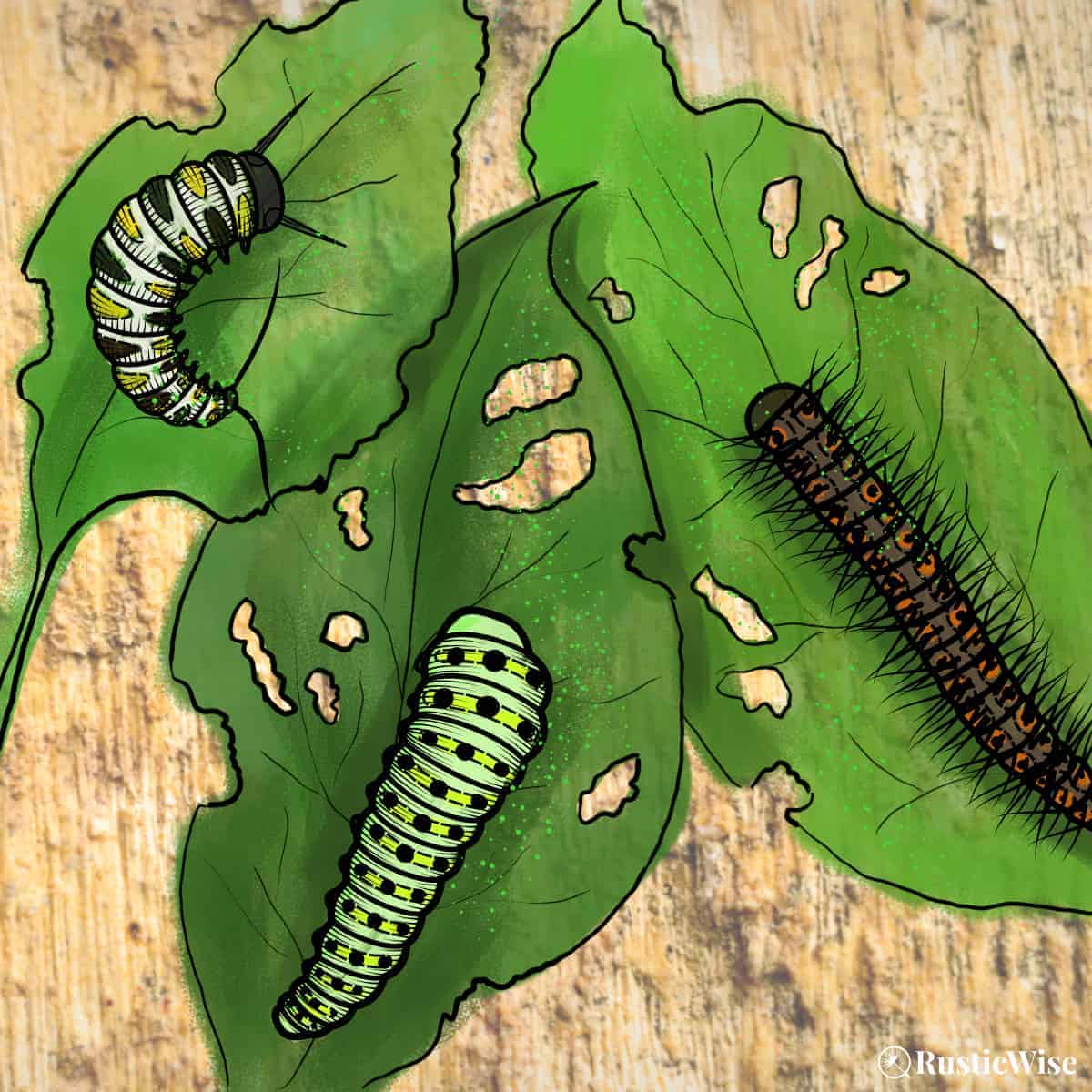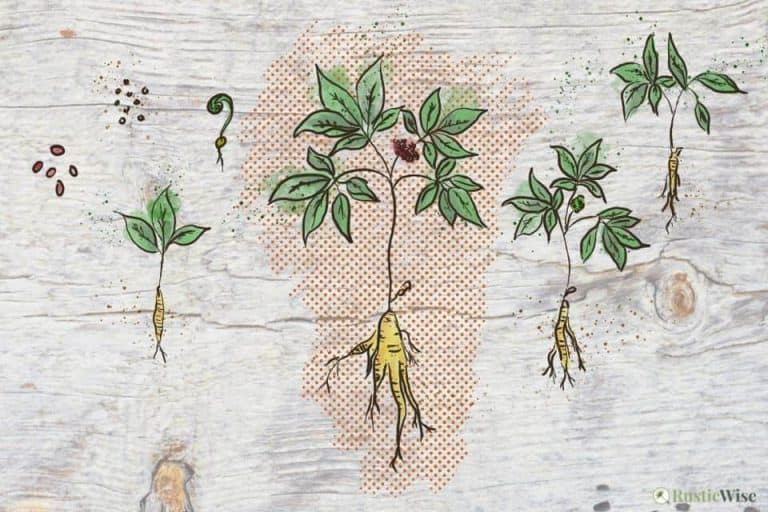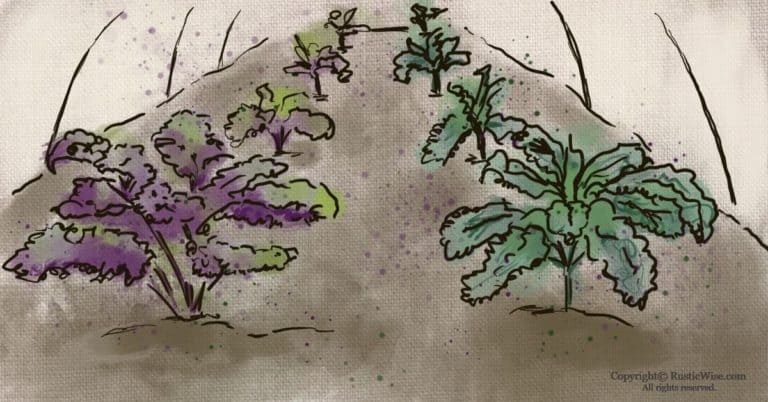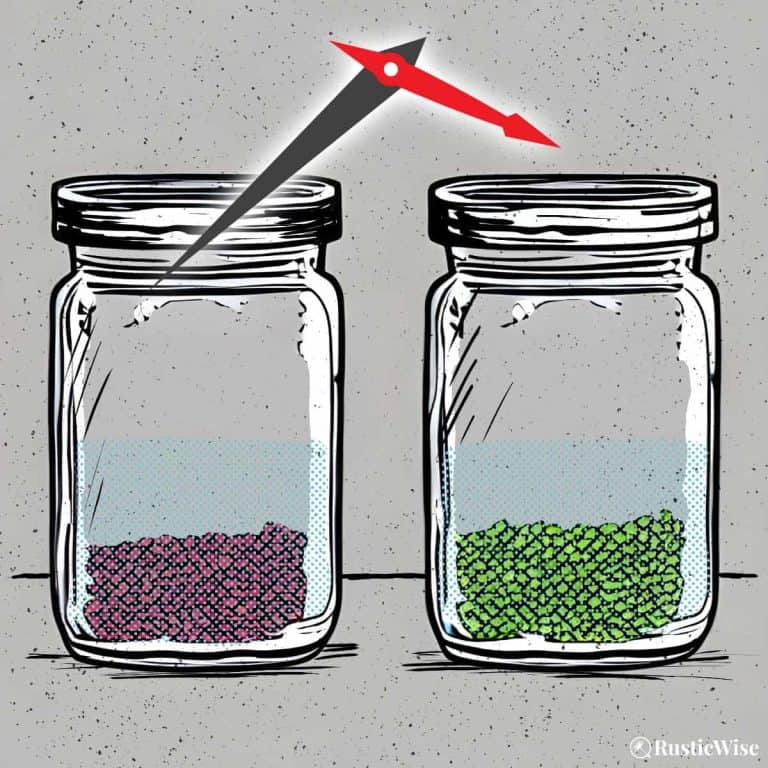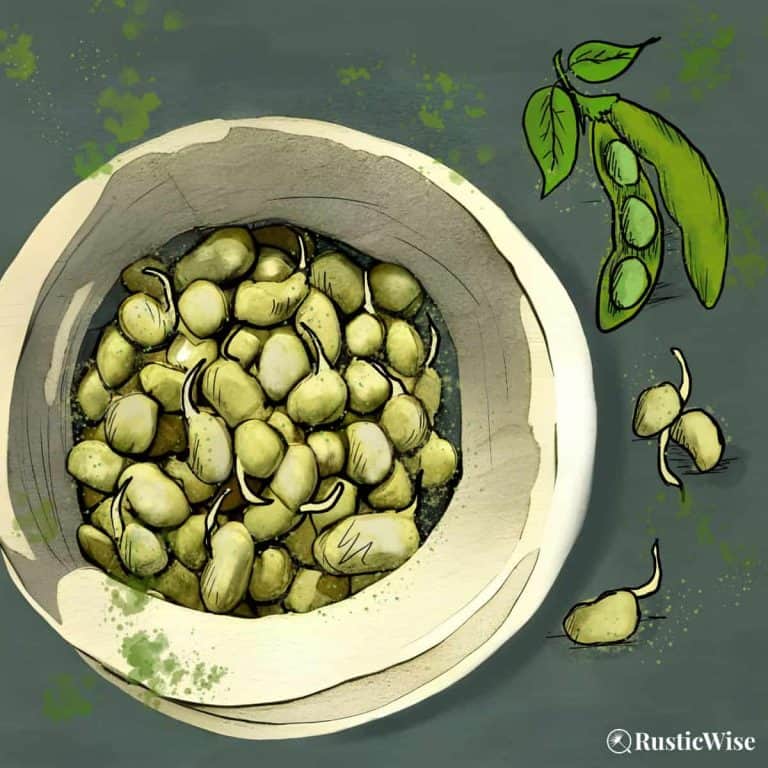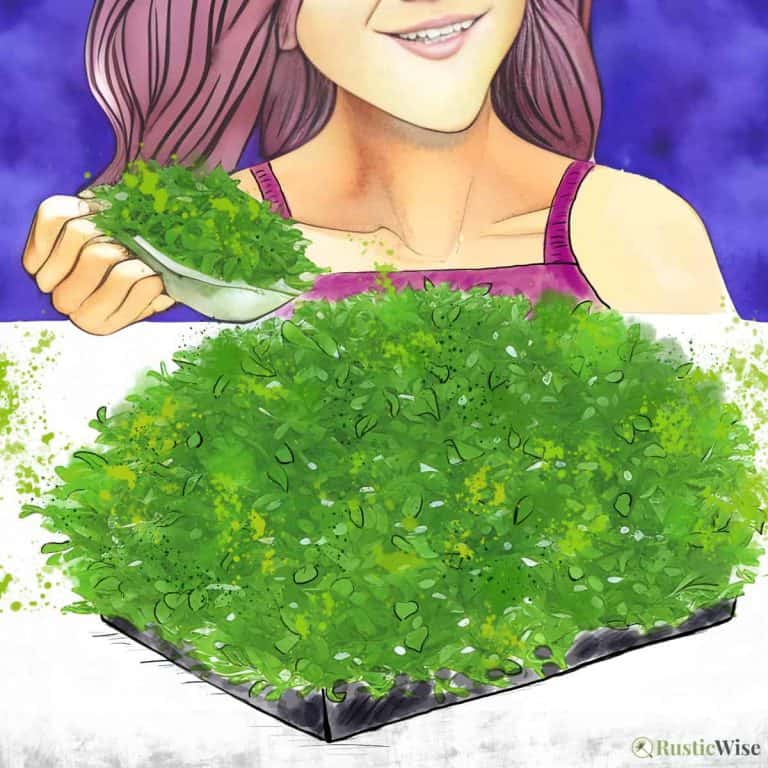Does Soapy Water Kill Caterpillars? Here Are 3 Methods That Work
Is your garden overrun with caterpillars? Caterpillars are one of the most common pests and can wreak havoc in gardens and crops, making pest control necessary to save a season’s yield.
Many gardeners have tried to get rid of these pesky critters by using soapy water. But does soapy water kill caterpillars, really? A DIY soapy spray is not generally effective on larger insects such as caterpillars or beetles. Soap solutions work better for smaller, softer-bodied insects like aphids, mites, thrips, and whiteflies.
While some gardeners swear by using soapy water to control pests, it’s not a cure-all and soap solutions have its downsides. Still, there are several eco-friendly methods that do actually work get rid of caterpillars. Let’s discuss what these methods are and how they help keep your plants safe from insect infestations.
The benefits of having caterpillars in the garden
While most people would consider caterpillars pests, there are some benefits to having them around. Simply put, caterpillars eventually turn into pollinators—butterflies or moths. Caterpillars may not qualify as beneficial insects, but pollinators are vital to our ecosystem. They help to transfer pollen from flower to flower, and without them, the crops we rely on would disappear.
Caterpillars are simply the immature stage of the growth of butterflies and moths. They also play an important role in the food chain, as they are a food source for many other species.
When to worry about caterpillars in your yard
If you see a caterpillar or two in your garden, it’s not a big deal. Caterpillars have many natural enemies such as birds, predatory insects, and wasps. Sometimes they may simply get wiped out by disease.
However, if you notice plenty of bitten leaves and stems in your garden, it’s time to take notice. Caterpillars are voracious eaters. They can cause a lot of damage to a vegetable garden if they are not kept in check. There are many different types of caterpillars, and an infestation of just a few can quickly destroy your crop. Caterpillars eat leaves and stems, and can strip a plant completely bare in a matter of days.
If you have cedar trees with damaged leaves, or spruce trees, or junipers with brown-tipped branches, you may have a bagworm infestation.¹
Bagworms are sometimes called bagworm moth caterpillars, and live most of their lives inside small silken sacs. They are known to eat the foliage of up to 128 types of trees, leading to severe damage, or death of the tree.¹
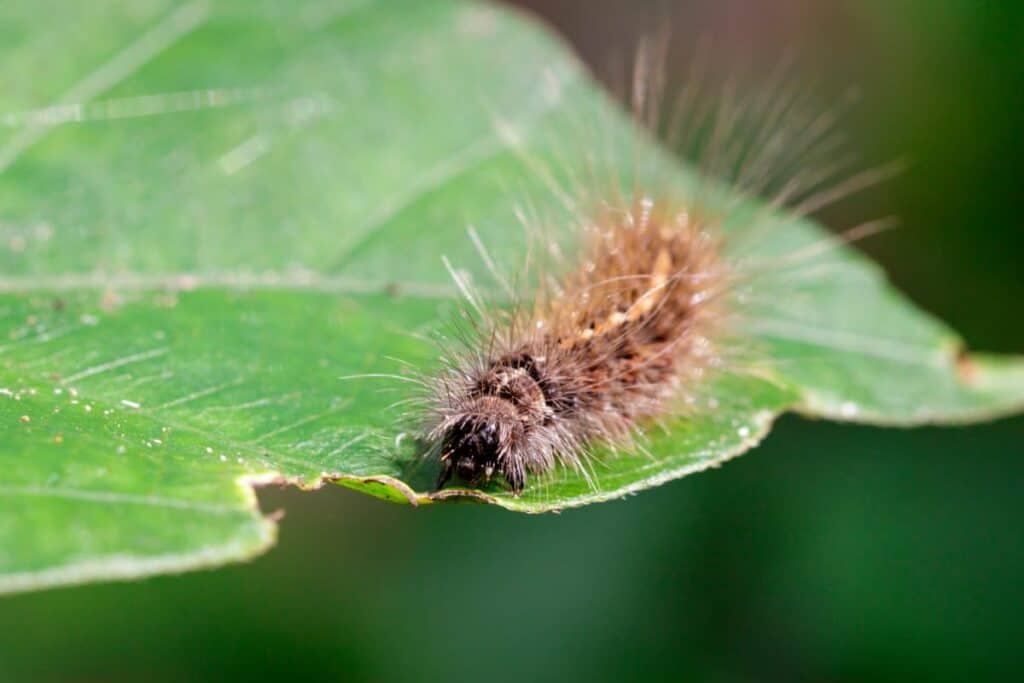
Early detection of caterpillars is key
If you see caterpillars in your garden, it is important to take action soon. Caterpillar eggs and young larvae are easier to get rid of than mature counterparts.
Most insecticides, sprays, and other preventative measures are most effective when the caterpillars are at a young stage of growth. This is mainly because any spray you apply would be applied to foliage, and later ingested by the insect. As caterpillars mature, they eat less.
Does soapy water kill caterpillars? Here’s what you need to know
Unfortunately, while a DIY soapy water spray might work for other soft-bodied insects like aphids, mites, thrips, and whiteflies, it’s NOT an effective way to repel caterpillars, or larger insects like beetles.²
Many gardeners turn to dish soap as a cost-effective and less harmful way to get rid of garden pests. The jury is still out on how exactly soapy water works to kill insects, but the general consensus is that when soap coats an insect’s body, it strips away the protective barrier, and causes the insect to dry out, and eventually die.
The downsides of using dish soap spray
The problem with liquid soap sprays is that they need to be applied directly to the insect’s body to be effective. This requires patience and time (as well as good aim!)
Spraying the leaves of plants doesn’t do much to repel insects.
And one of the major disadvantages of using a dish soap spray is that it can damage some plants, which leads us to the next section…
Does dish soap hurt plants?
Yes, dish detergent, laundry detergent, and hand soap contain ingredients that can damage the outermost layer of the leaf. It does this by stripping away the naturally occurring oils and waxes that protect the leaf.
For some plants, this loss of protection can be deadly. For others, it can make the plant more vulnerable to fungal diseases. Other plants may experience leaf burn (through phototoxicity).
Dish detergents were not designed to be used for plants—they’re meant to strip away oily particles and other food remnants.
So, which plants are most susceptible to damage from soap?
Avoid using soap sprays on the following types of plants:²
- Cherry
- Hawthorn
- Plum
- Sweet pea
- Some tomato varieties
- Any plant that is under stress
Tip: Always test a small patch of the plant before applying a DIY soap spray. Always dilute dish soap with water. Stick with a mild 2 percent soap and water solution. Use 2 teaspoons of dish soap to 1 pint (2.4 cups) of water.²
What does dish soap do to caterpillars?
Dish soap is not a pesticide, and will generally not kill caterpillars. So, dish soap and water are not a good solution to caterpillar infestations.
When dish soap is mixed with water and sprayed on plants, it creates a slippery coating on the plants. This coating makes it difficult for insects to move around the plant.
But, dish soap when combined with water in a bucket can help to safely dispose of the little buggers, one by one.
3 Effective ways to kill caterpillars
So, if a soapy spray doesn’t work as a caterpillar killer, what does? Let’s go over 3 main ways to rid your landscaping or garden of these fuzzy critter, with minimal damage to other plants.
Using insecticidal soap and oils is much less dangerous than traditional, chemical-laden pesticides which can harm other pollinators and plants.
1. Picking caterpillars by hand and drowning in soapy water
This first method might not be everyone’s cup of tea. If the thought of picking up caterpillars with your hands creeps you out, you might want to skip onto the next method. (Or, use a pair of gloves!)
However, keeping a sharp eye on your garden plants and crops is one of the best and most effective ways to prevent caterpillars from taking over your backyard. This is part of an early prevention strategy that nips any potential pest problems in the bud.
Take a stroll through your garden. Prepare a bucket with roughly a gallon of water and a few squirts of dish soap. Hand-pluck caterpillars or eggs and place them into a bucket of soapy water.³
The soap helps to reduce surface tension of water, which causes the caterpillars to sink and drown.

Credit: Vector State
Keep an eye out for the following signs on your plants:³
- Bitten leaves
- Caterpillars
- Caterpillar eggs
- Excrement
- Rolled leaves
- Webs on leaves
Don’t forget to look under leaves, a common place for caterpillars to hide. Prune any damaged leaves, or leaves with webs as you go along.
Is this time-consuming? Absolutely. Is it effective and gentle on the earth and surrounding plants? Yes, to both.
Tip: If you don’t like the idea of drowning the larvae, you can simply relocate them to another area, far enough away from the original plant. It’s very unlikely the critters will return to the same spot.
2. Bacillus thuringiensis subspecies kurstaki (Btk)
Bacillus thuringiensis subspecies kurstaki, a ridiculously long name, is best known as Btk, a form of microbial insecticide that targets mainly caterpillars (the larvae of moths and butterflies). This makes it safe to use around other insects and pollinators such as bees.⁴
Btk is effective on most leaf-eating larvae including common garden caterpillars, bagworms, and tent caterpillars found on shrubs and trees. It also works on European corn borer larvae.
Unfortunately, Btk does NOT work well on caterpillars that bore into plants, or those that live in soil.
It’s available in either liquid form (Thuricide), or as a powder or dust (Dipel).
Like most insecticides, Btk works best if sprayed early in the season, when larvae are small and young.
3. Neem oil
Neem oil is a plant-based extract from the seeds of the neem tree. It’s a natural insecticide that works on caterpillars, as well as aphids, beetles, leafminers, mealybugs, scale crawlers, spider mites, thrips, and whiteflies.⁴
Neem oil works by covering the insect and suffocating it. It’s best to use neem oil on young caterpillars that are actively growing. An added benefit of using neem oil is that it has mild fungicidal properties.
Other eco-friendly ways to deter caterpillars
There are many natural ways to keep caterpillars away. Here’s our short list:
- Keep it covered: Cover plants with a natural, breathable fabric to protect them from pests.
- Companion planting: Try planting some companion herbs such as lavender, mugwort, peppermint, and sage which protect your plants from hungry caterpillars.
- Make a sticky band: To keep certain tree dwelling caterpillars at bay like the gypsy moth, the University of Wisconsin-Madison suggests making a stick band using duct tape and petroleum jelly. This prevents caterpillars from climbing up the trunk. To do this, wait until the bark is dry, and wrap duct tape around 4 feet from the base of the trunk, with the shiny side out. The sticky barrier should be several inches wide. Next, in the middle of the duct tape, apply petroleum jelly making sure to leave a couple inches of uncoated duct tape along the bottom. Caterpillars will climb up, and get stuck in the band!⁵
Does white vinegar kill caterpillars?
White vinegar is acidic and non-selective, meaning it will also kill other beneficial insects and plants. This is why vinegar is a poor choice for killing caterpillars. Spraying leaves of your plants with vinegar to kill caterpillars could badly damage the plant.
👉 If you like this post, see our complete Indoor Growing Collection.
Would you like more timeless tips via email?
Fun tips to help you live an independent, self-sustaining lifestyle. Opt-out at any time.


References
- Iowa State University, Bagworm, https://hortnews.extension.iastate.edu/bagworm. Accessed March 2023.
- University of Minnesota Extension, Coming clean on soap in the garden, https://extension.umn.edu/yard-and-garden-news/coming-clean-soap-garden. Accessed March 2023.
- Oklahoma State University, Controlling caterpillars in the garden, https://extension.okstate.edu/programs/gardening/site-files/docs/2020/april-5-controlling-caterpillars.pdf. Accessed March 2023.
- Clemson University (Clemson Cooperative Extension), Less Toxic Insecticides, https://hgic.clemson.edu/factsheet/less-toxic-insecticides/. Accessed March 2023.
- University of Wisconsin-Madison, Making a Sticky Barrier Band, https://fyi.extension.wisc.edu/spongymothinwisconsin/pest-management-2/making-a-sticky-barrier-band/. Accessed March 2023.

Author: Josh Tesolin
Josh is co-founder of RusticWise. When he’s not tinkering in the garden, or fixing something around the house, you can find him working on a vast array of random side projects.

